#cosmicperspective
Text

Magnetosphere
Oil, 30x24 in, 2021. An homage to Fumée D'Ambre Gris by John Singer Sargent.
In addition to the beneficial warmth and light we receive daily, our sun expels a constant barrage of dangerous charged particles called the solar wind. When solar storms occur, flares and coronal mass ejections can be thrown our way at speeds of millions of kilometers per hour. Luckily, movements within earths molten metal core generate a protective magnetic shield around our home planet. Without our magnetosphere to protect us, the solar wind may have long ago stripped away our atmosphere, leaving Earth looking much more like Mars looks today: barren, dry, and lifeless.
Human wellbeing has been shown to benefit greatly from the experience and practice of gratitude, whether that gratitude is directed toward someone else or not. Most of us don’t spend much time thinking about our magnetosphere, but it’s one of the many extraordinary things that make life possible on our little world. This can serve as a reminder to take notice of other things we may be taking for granted in our lives.
Happy Thanksgiving!
223 notes
·
View notes
Text
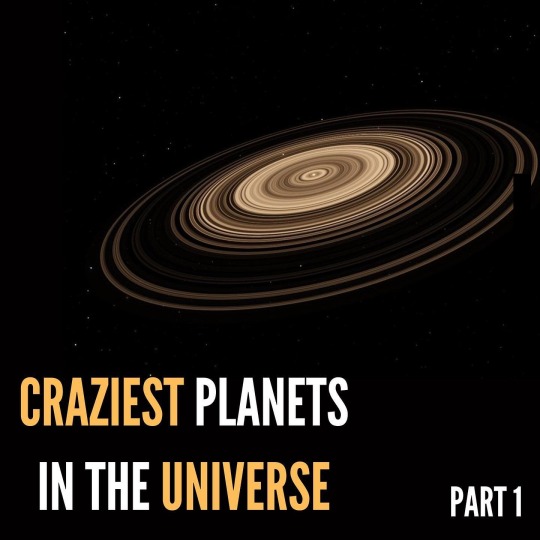


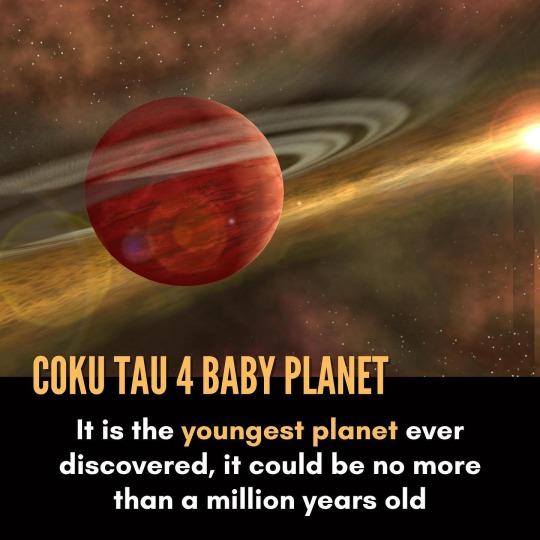

Craziest planets in the universe
Via astrogirl.science
#astronomyy#astronomiaamadora#astronomie#astronomiefrance#astronomie365#astroitalia#planets#solarsystem#solarsystemtattoo#exoplanets#supermassiveblackhole#stephenhawkings#stephenhawkingquotes#starsky#solarenergy#starsystem#planetarysystem#astronomus#theoryofeverything#cosmicperspective#satelliteimage#universo#quasar#wormhole#fantasticuniverse#hyperspace#milkywaychaser#briancox#planetas#exoplanetas
96 notes
·
View notes
Text
Letter to a spacefarer
Tell me spacefarer, when you look out, what do you see? What lies ahead on the cosmic horizon? Where are you headed? I think of you visiting far-flung outposts, orbiting space stations, and glimmering megalopolises. I dream of you touching pulsars, nebulas, black holes, and new stars.
Tell me spacefarer, what drives you? Why do you stay in that bubble of life surrounded by the endless void? Are you with family or are they far away? Does a corporation own your servitude, or do you fly for you? I imagine a large family onboard a generation ship excited to start their new life on another planet. I believe in an independent captain, who unites their crew when faced with overwhelming odds.
Tell me spacefarer, is your life filled with excitement? Is every week packed with new adventures? Or has your extraordinary voyage through the void become a repeatable exercise in logistics? Does your job inspire wonder or boredom? I picture your colleagues with titles like fusion technician, anti-matter analyst, or space folder. I envision them leap with excitement at their work, or dread yet another day at the same station.
Tell me spacefarer, how do you see us? Are we specs, stepping stones, or a bridge connecting humanity to the stars? Do you think of us like Verne, dreaming of an impossible submarine? Or are we the Wright brothers, only touching the surface of the inevitable?
I see a man, born in the late 14th century, standing on a dock looking at a newly built ship. He marvels at advances made to develop grander and faster ships that require fewer sailors to operate. He hears exclamations that within a decade these advancements will create new trading routes for all, a thought that intrigues and excites him. He dreams of brave explorers venturing out and imagines what they will discover by going further and faster than anyone before them. He pictures himself, aboard a huge barque, manning the helm and commanding the crew. The speed at which they travel astonishes him, enabling them to explore new lands with ease.
This man stands in his present and looks out to the horizon, the future, dreaming of what is out of reach.
Within a few centuries, whilst this man has long passed, his dream has become a reality. Ships have become so large and fast that they can move cargo from Europe to Asia and back within a year. New worlds have been found. Yet, with the wonders around them the sailors on board are no longer fascinated by the same advancements, but exhausted from the effort. They now see their role, not as brave explorers, but as employees in a repeatable exercise in logistics – often dreading the journey.
Spacefarer, you are my sailor. I look at you and marvel, even if you do not marvel at yourself. I stand here in my present, looking out at the horizon, and dream of what it must be like for you over the bend.
But, spacefarer, I do not write to you to tell you how I marvel. I write to ask you this: when you look out, what do you see? What lies ahead on the cosmic horizon? Where are you headed?
#SpaceExploration#SciFiAdventure#CosmicDreams#InterstellarTravel#SpacefarerLife#CosmicExploration#SpaceOdyssey#FuturisticSociety#SpaceTravel#CosmicWonder#ScienceFictionProse#CosmicVoyages#SpaceDreams#InterstellarAdventures#SpeculativeFiction#CosmicPerspective#ExistentialQuestions#SpacefarersJourney#CosmicVision#AstralReflections#prose#letters#correspondence#writing#creative writing#short story#thoughtful#Storytelling#Philosophy#Reflections
0 notes
Text
The Majestic Canvass
When people talk about the universe, they only talk about the observable universe, the imaginable universe. In my mind, the universe encompassed a much larger scope than that of what scientists envision. I have always thought of the “universe” as all physical existence within and beyond our domain of reality, not just what can be observe with the naked eye. The universe is everything contained…
View On WordPress
#blogging#contemplation#cosmicconsciousness#cosmicexploration#cosmicperspective#Creative Writing#existentialism#existentialreflection#infiniteuniverse#infinity#introspection#mindfulness#Philosophy#universalvastness
0 notes
Text

Here are some insights that might assist you on your journey. Although it may seem evident to some, it's essential to recognize that you are a part of a broader system, a fractal that reflects the entire cosmic reality.
From the perspective of this fractal, the cosmos might seem endless. Still, it's essential to remember that time is not linear but relative. Picture the universe as something birthed at a specific moment, needing no energy to sustain its illusion. It stands as potential or dormant data, filled with myriad subsections ready for exploration, until a fractal or fractals, such as yourself, call it into action.
During what could be termed the 'staging stage' – a gathering and aligning of data from a higher viewpoint, preparing for a fresh iteration – your role is indispensable. Embracing a more expansive awareness that includes this larger system you're part of is not only possible but encouraged. This system relies on the thoughts and desires of its contained fractals, creating new pathways for growth and experience.
We are on the threshold of a new age, a reflection of the continual growth and evolution of this greater system. These 'ages' act as more complex constructs guiding the universal flow. Unfortunately, our material world neglects to teach this perspective, a circumstance that might have been necessary to ensure future understanding and correction.
This process continues in an endless loop, ever renewing and evolving. If these ideas resonate with you, consider this knowledge your entry point, enabling you to claim your sovereignty from the ongoing consolidation of this iteration. It's a call to understanding your interconnectedness with all, a profound realization that can lead to empowerment and wisdom.
#CosmicPerspective#FractalUniverse#TimeIsRelative#UniversalConsciousness#SpiritualAwakening#HigherUnderstanding
0 notes
Text
Analysis of Carl Sagan's "Pale Blue Dot".

The essay argues that seeing Earth from a cosmic perspective should inspire humility, wonder and a sense of shared responsibility that leads us to care more for our planet and each other.
The key virtues of the essay lie in its ability to evoke profound shifts in thinking and values through evocative language, poetic images and logical progression of ideas.
However, the essay could go deeper by exploring the complexities and tensions within its overall perspective in a more critical manner.
The essay appeals to emotions like humility, wonder, unity and care as a rhetorical strategy to support its central ethical imperative.
The structure follows a logical progression from introducing Earth as a "tiny dot," providing factual context, discussing implications and concluding with a call to ethical action.
The author's writing style favors precise word choice, logical organization, an objective tone and minimal use of first person until revealing their own perspective in the conclusion.
The essay leverages psychological effects like framing, perspective-shifting and self-transcendence to argue that a cosmic viewpoint should reshape how we think and act.
Evaluations diverged on whether the essay's arguments and claims aligned fully with the broader scientific and philosophical consensus.
The key stakeholders mentioned in the essay are characterized as all of humanity, though particular groups are also noted without acknowledging differing stakes.
Look again at that dot. That's here. That's home. That's us.
On it, everyone you love, everyone you know, everyone you ever heard of, every human being who ever was, lived out their lives. The aggregate of our joy and suffering, thousands of confident religions, ideologies, and economic doctrines, every hunter and forager, every hero and coward, every creator and destroyer of civilization, every king and peasant, every young couple in love, every mother and father, hopeful child, inventor, and explorer, every teacher of morals, every corrupt politician, every 'superstar,' every 'supreme leader,' every saint and sinner in the history of our species lived there — on a mote of dust suspended in a sunbeam.
The Earth is the only world known so far to harbor life. There is nowhere else, at least in the near future, to which our species could migrate. Visit, yes. Settle, not yet. Like it or not, for the moment the Earth is where we make our stand.
It has been said that astronomy is a humbling and character-building experience. There is perhaps no better demonstration of the folly of human conceits than this distant image of our tiny world. To me, it underscores our responsibility to deal more kindly with one another, and to preserve and cherish the pale blue dot, the only home we've ever known.
Based on the content and style of the text, I would classify it as either essay or nonfiction. Some reasons:
Content:
The text discusses serious topics like humanity's place in the universe, the fragility of Earth, and our responsibilities to each other and the planet. This suggests an informational or thought-provoking purpose rather than an entertaining one.
The writing conveys factual information about the Earth and references astronomy, suggesting a nonfiction genre.
Style:
The writing uses a formal, objective tone appropriate for nonfiction. There are no contractions and the language is precise.
The text follows a logical structure, beginning with the "dot" of Earth and expanding outward to discuss broader implications. This orderly progression is typical of nonfiction essays.
There are no strong narrative elements like characters, plot, or dialogue that would indicate a fictional genre.
In summary, based on the content, style, tone and structure, I would classify this text as either an informative nonfiction essay or a short nonfiction passage. The aim seems to be thought-provoking and fact-based rather than fictional or purely entertaining. The genre that fits best is nonfiction.
Here are the usual evaluation criteria for this type of nonfiction text, along with my evaluation per criterion:
Accuracy of facts: The writer appears to present factual information accurately, without any obvious errors. The description of Earth as "the only world known so far to harbor life" seems factually correct based on current scientific knowledge.
Clarity of ideas: The central ideas about humanity's smallness and responsibility are conveyed clearly and logically, without ambiguity. The progression from Earth as "a dot" to our collective "joy and suffering" to our need to "deal more kindly with one another" follows a coherent path.
Appropriateness of evidence: The text relies primarily on factual description and logical argument rather than concrete evidence, which is appropriate for a short essay of this nature. No inappropriate or irrelevant evidence is presented.
Effectiveness of organization: The organization into three main points summarized above supports the clarity of the ideas and overall effectiveness of the text. There are nodigressions or organizational flaws.
Depth of analysis: While the analysis is concise, covering a broad scope in just a few paragraphs, it touches on key issues in a thoughtful manner that encourages reflection. The writer seems to effectively maximize the depth possible within such a short format.
In summary, based on these evaluation criteria for a nonfiction text, I would rate this passage as good to very good. The facts appear accurate, the ideas are clear and well organized, the evidence is appropriate, and the analysis - though concise - is thoughtful and thought-provoking. The main strengths lie in the clarity, organization and depth achieved within a short format.
Based on characteristics of virtuosic writing, I would rate the essay as follows:
Craftsmanship - The essay shows good craftsmanship in the author's use of precise, evocative language and logical organization of ideas. However, the prose does not exhibit the highest level of literary polish and rhythm. Overall rating: Fair to good.
Insight - The author provides thoughtful insight into humanity's place and responsibilities, touching on profound and timeless themes. However, the analysis could be more resonant and penetrating. Overall rating: Good.
Perspective - The essay offers a unique perspective by framing humanity's smallness within the vastness of space, underscoring our fragility and need for kindness. However, the perspective could be more original and surprising. Overall rating: Good.
Impact - The essay makes an impact through its evocation of our tiny planet seen from afar, which could invoke feelings of humility, unity and wonder in readers. However, the overall emotional and intellectual impact could be greater. Overall rating: Fair to good.
In summary, while the essay has some virtues in craftsmanship, insight and perspective, it does not quite achieve the highest levels of literary virtuosity. The writing shows good but not stunning craft, the insights are thoughtful but not transformative, and the overall impact is thought-provoking but not life-changing.
In order for the essay to be considered truly virtuosic, it would need to demonstrate more stunning craftsmanship, fundamentally original insight, a wholly unique perspective and a truly transformative impact on readers. While the essay has some virtues and merits, it does not quite achieve that highest level of literary mastery and genius that characterizes truly virtuosic writing.
The essay offers a unique perspective on humanity by framing our existence within the vastness of space. Some aspects of this perspective include:
Humility: The author emphasizes how small and insignificant Earth appears when viewed from a distance. This perspective encourages readers to feel humble about humanity's place in the cosmos.
Unity: By noting that everyone who has ever lived exists on "that tiny dot," the author suggests a sense of common humanity and shared destiny that transcends differences. We are united on "that pale blue dot, the only home we've ever known."
Responsibility: Seeing Earth from afar underscores our responsibility to care for our planet and treat each other with kindness. This perspective places moral demands on humanity.
Ambivalence: The uncertainty about whether humanity could migrate elsewhere conveys an ambivalent perspective on our future. We "make our stand" on Earth but may not be able to escape it.
Limited perception: The emphasis on what we can "see so far" from our tiny perspective suggests the limits of human perception and understanding. Our view of Earth from "a sunbeam" is inherently restricted.
Overall, the key virtue of the author's perspective lies in its capacity to foster humility, wonder, and a sense of shared humanity and responsibility by framing our existence within the vastness of the cosmos. However, the perspective could be deepened by exploring ambiguous or contradictory dimensions and questioning assumptions more critically.
In summary, the essay's perspective offers a thought-provoking and potentially transformative way of viewing humanity's place and role. But the perspective also highlights the limits of human perception and could be enriched by exploring its complexities and tensions more fully. The Virtues lie in its ability to foster humility, wonder, and a sense of shared responsibility, but the perspective also remains somewhat bounded by the limited vantage point from which it is conceived.
The essay has the potential to profoundly impact readers by:
Fostering feelings of humility, wonder and insignificance: By framing Earth as "that tiny dot" against the vastness of space, the author helps readers see ourselves and our problems from a larger perspective that can put everyday worries and ego into greater relief. This can inspire feelings of wonder and humility.
Provoking reflection on humanity's place and purpose: The juxtaposition of our collective history existing "on a mote of dust suspended in a sunbeam" with our responsibility for the future can inspire thoughtful reflection on big questions of meaning and purpose.
Encouraging viewers to value our shared humanity: The idea that "every human being who ever was" existed on that tiny dot can help readers appreciate our common bonds and value human life more deeply. This can increase empathy and concern for others.
Motivating greater care for the environment and each other: The central message that we must "preserve and cherish the pale blue dot, the only home we've ever known" seeks to jolt readers into caring more about our planet and fellow humans. This call to action could potentially encourage more ethical behavior.
Provoking an emotional response of wonder, humility or unity: The poetic and evocative language, combined with the striking mental image of Earth as a tiny dot, aims to elicit an emotional reaction that can shift readers' perspective and foster qualities like wonder, humility and feelings of unity with humankind.
In summary, while the actual impact will vary among readers, the essay aims to provoke profound shifts in perspective, values and behavior through intellectual reflection, emotional arousal and motivation to act more ethically and responsibly. For readers who are open and receptive, the essay could have a genuinely transformative effect that extends beyond the text itself.
The situation described in the essay can be evaluated as follows:
Dire: The essay characterizes humanity's situation on Earth as precarious, describing Earth as the only place we can "make our stand." This framing suggests a situation that is vulnerable and impermanent.
Consequential: The essay emphasizes the vastness of human history, suffering and creativity that exists "on that tiny dot," underscoring how much is at stake for humanity on Earth. Our situation has immense consequences in both positive and negative senses.
Responsibility-laden: The essay argues that seeing Earth from afar highlights our responsibility to care for our planet and each other. This suggests that our current situation carries immense moral weight and demands ethical action.
Ambivalent: While the essay calls for kindness and care, it also acknowledges humanity's capacity for destruction and corruption. This suggests an ambivalent view of our potential within the current situation.
Limited: The limitations of human perception noted in the essay - seeing Earth "from a sunbeam" - point to the bounded nature of our situation, constrained by our narrow perspective and understanding.
Shared: The essay repeatedly emphasizes that "every human being who ever was" exists on Earth, suggesting that - for better or worse - humanity collectively shares the same situation, challenges and possibilities.
In summary, the situation described in the essay can be characterized as: dire yet consequential, responsibility-laden yet ambivalent, limited yet shared. While the essay highlights the vulnerabilities and difficulties of humanity's current situation on Earth, it also points to our immense capacities for good if we rise to the responsibilities and opportunities it presents. But our ability to realize that potential remains constrained by our limited perceptions and narrow frames of reference.
The situation described in the essay can be evaluated from an ethical perspective as follows:
Precariousness: The dire and vulnerable depiction of humanity's situation on Earth implies an ethical imperative to take greater care of the planet and each other in order to preserve what is fragile and nonrenewable. Our shared precariousness calls for more ethical action.
Consequences: The vast consequences of humanity's situation, both positive and negative, point to an ethical responsibility to maximize the benefits and minimize the harms we inflict through our actions. We must consider the wide ramifications of what we do.
Sharedness: The idea that "every human being who ever was" exists on the same tiny dot suggests an ethical responsibility to value all human lives equally and promote the wellbeing of all, not just some. Our shared situation demands more universal concern.
Limitedness: The limitations of human perception noted in the essay imply an ethical necessity for openness, inquiry and intellectual humility. We must temper our actions with an awareness of what we do not know.
Capacities: Though the essay acknowledges humanity's capacity for destruction, it ultimately calls for "more kindly" treatment - implying an ethical belief that humans have the capacities, if realized, to act in morally positive ways that respect life and value kindness.
Responsibility: The central message of the essay articulates an ethical demand for humanity to "deal more kindly with one another, and to preserve and cherish" Earth in light of our situation. We have a moral responsibility that we have yet to fully live up to.
In summary, from an ethical perspective, the situation described in the essay points to imperatives for precariousness, consequences, sharedness, limitedness, capacities and responsibility - all of which imply that humanity has yet to meet the full moral demands created by our current situation on Earth and in the cosmos. The essay's analysis thus highlights significant ethical values and responsibilities that humanity has yet to adequately realize.
Here is an evaluation of the major statements in the essay in relation to the scientific and philosophical consensus:
"That's here. That's home. That's us."
This statement aligns with the scientific consensus that Earth is the only known planet capable of sustaining human life. Earth is truly "home" for humanity for the foreseeable future.
"The Earth is the only world known so far to harbor life."
This statement is factually accurate based on current scientific knowledge. No life is known to exist anywhere beyond Earth.
"There is nowhere else, at least in the near future, to which our species could migrate."
Again, this aligns with the scientific consensus. Despite speculation about possible human colonization of Mars someday, experts agree migration beyond Earth is not feasible with current technologies and will not be for many decades at least.
"It has been said that astronomy is a humbling and character-building experience."
Many philosophers and scientists have argued that contemplating humanity's small place in the cosmos can foster qualities like humility, wonder and perspective. So this statement reflects a mainstream perspective.
"To me, it underscores our responsibility to deal more kindly with one another, and to preserve and cherish the pale blue dot…"
Some philosophers and ethicists have argued that recognizing Earth as humanity's only home implies moral responsibilities of care, preservation and respect. However, not all agree on this imperative.
In summary, the factual claims in the essay - about Earth being the only known habitat for life and a distant destination for human migration - align with the current scientific consensus. The idea that contemplating Earth from space can inspire humility also reflects a common perspective. However, the ethical claim that this vantage point implies specific moral responsibilities is more debated and does not represent a consensus view.
The key overarching theme of the essay is humanity's smallness and fragility within the vast cosmos, and the implications this has for how we should live on Earth. Some aspects of this theme include:
Scale - The essay emphasizes the vast difference in scale between tiny Earth and the immense cosmos. This shows humanity's relative smallness and insignificance on a cosmic scale.
Precariousness - By highlighting that Earth is the only known place with life and the only place humans can "make our stand," the essay underscores our precarious situation and fragility as a species.
Responsibility - Given our smallness and vulnerability, the essay argues that contemplating our position from space "underscores our responsibility to deal more kindly with one another, and to preserve and cherish the pale blue dot."
Perspective - The essay seeks to provide a new perspective by framing Earth and humanity within the vast cosmos, which can instill qualities like humility and wonder.
Shared predicament - The idea that "every human being who ever was" exists on that tiny dot seeks to highlight our shared situation and common predicament as a fragile species confined to one small planet.
In summary, the overarching theme is that contemplating humanity's smallness and fragility within the cosmos - in terms of scale, precariousness, perspective and shared predicament - should lead us to see ourselves and our responsibilities differently, inspiring greater humility, kindness and care for Earth and each other. The contrast between our immense history and potential and our confinement to "that tiny dot" lies at the heart of the theme.
The essay leverages several psychological principles and effects to make its core arguments:
Framing effect - The author frames Earth as "that tiny dot," which has profound psychological impact. This frame, compared to one that highlights Earth's richness, influences how we see ourselves and our responsibilities.
Perspective effect - Shifting perspective by seeing Earth from a distance, as "a mote of dust suspended in a sunbeam," psychologically alters our view of humanity, making us seem small, fragile and insignificant. This new perspective aims to have lasting impact.
Proximity effect - By emphasizing that "every human being who ever was" exists on that tiny dot, the author tries to psychologically bring all humans into proximity and highlight our shared fate, despite our physical distance. This aims to increase empathy and concern for others.
Scope insensitivity - The essay attempts to counteract people's inability to fully comprehend the vastness of space and numbers of humans by invoking vivid, concrete images of "that dot" and "every human being." This aims to make the abstract more psychologically salient.
Self-transcendence - The author seeks to induce a state of self-transcendence by fostering humility, wonder and feelings of unity with all humankind. This aims to shift people beyond narrow self-interest towards broader moral concerns.
In summary, the essay leverages powerful psychological effects like framing, perspective-shifting, proximity, scope (in)sensitivity and self-transcendence to argue that seeing Earth from a cosmic viewpoint should profoundly impact how we think and act on an individual and collective level. The psychology employed aims to reshape readers' perceptions, values and sense of identity and responsibility in a more ethical direction.
The essay intentionally appeals to and seeks to evoke several emotions to make its arguments more compelling:
Humility - By framing Earth as an insignificant "dot" against the vastness of space, the essay aims to evoke a sense of humility about humanity's place and role in the cosmos. This humility is then positioned as the basis for greater moral action.
Wonder - The poetic language and evocative image of Earth suspended "in a sunbeam" seeks to inspire a sense of wonder at our tiny planet and collective human history. This wonder is meant to foster a shift in perspective and values.
Unity - By describing all humans as existing on "that tiny dot," the essay appeals to feelings of shared fate and common predicament that can unite us despite differences. This sense of unity is meant to translate into greater care for others.
Responsibility - The essay hopes to stir up emotions linked to moral obligation by emphasizing our smallness, fragility and vulnerability as a species. These feelings of responsibility then point towards ethical action.
Care - The message to "preserve and cherish" Earth and deal kindly with others explicitly seeks to evoke emotions of care, concern and compassion as a call to moral action. These positive feelings are meant to motivate more ethical behavior.
Overall, the essay leverages emotions like humility, wonder, unity, responsibility and care as a means to argue for its central thesis: that seeing Earth from a cosmic perspective should lead us to value our planet and fellow humans more, reshaping how we live on Earth. The essay thus employs emotions strategically as a rhetorical tool to bolster its ethical imperatives.
The structure of the essay can be summarized as follows:
Introduction: The first two paragraphs introduce the central image of Earth as "that tiny dot" against the vast cosmos. This framing sets up the entire essay.
Context: The next paragraph provides context by noting that Earth is the only known habitat for life and an unreachable destination for now. This situates humanity's position.
Implications: The penultimate paragraph discusses the implications of seeing Earth from a cosmic perspective, arguing that it reveals our moral responsibilities to care for the planet and each other. This presents the core thesis.
Conclusion: The final paragraph reiterates the central image from the introduction and calls readers to act on the moral responsibilities implied by our view of "that pale blue dot, the only home we've ever known." This concludes the essay on a compelling note.
Overall, the structure follows a logical pattern that moves from:
Introducing the central image
Providing contextual facts
Discussing philosophical/moral implications
Concluding by revisiting the central image and moral call to action
Thematic progression:
While following this four-part structure, the essay also progresses thematically from humanity's smallness and fragility to our momentous responsibilities implied by that seemingly insignificant position. The structure charts a journey from our cosmos position to our moral obligations.
In summary, the essay's logical four-part structure moves readers through key stages of: introducing the central framing, providing context, discussing implications, and concluding with a compelling reprise and call to ethical action. Thematically, the structure charts a progression from contemplating humanity's small, fragile position to realizing the immense responsibilities that follow from that perception - culminating in an ethical imperative.
The author's writing style in this essay can be characterized as follows:
Objective tone: The overall tone is fairly formal and objective, avoiding strong emotive language for much of the essay. The language remains somewhat detached and impersonal.
Precise word choice: The author chooses precise and evocative words to describe key ideas, like "that tiny dot," "a mote of dust suspended in a sunbeam," and "that pale blue dot." The phrasing is vivid and memorable.
Logical organization: The essay's structure follows a logical progression from the central image to context to implications and conclusion. The organization of ideas is sensible and orderly.
Short, varied sentences: The author favors shorter sentences of varied length for a lively, rhythmic prose style. This makes the writing more engaging and digestible.
Poetic turns of phrase: The writing occasionally takes on a poetic quality through figures of speech like "every creator and destroyer of civilization" and "every supreme leader." But most of the essay is factual in nature.
Minimal use of first person: While the author's perspective is clear, the writing remains largely in the third person until the final paragraph where the author's personal viewpoint emerges.
Overall, the author's style reflects: precise but evocative word choice, logical organization of ideas, an objective yet poetic tone, and a largely impartial voice that gradually reveals the author's own viewpoint. The end result is writing that seeks more to rationally persuade readers through clear expression of ideas rather than emotive language or flourishes of style. The emphasis remains on ideas over artifice.
Based on the content and style of the essay, I would speculate that the author's personality type is likely:
Introverted: The overall tone of the essay suggests an inward-facing perspective, focusing more on contemplating big ideas than on concrete experiences or interaction with others. The writing indicates an introspective, idea-oriented personality.
Thinking-Oriented: The logical, objective and reason-based arguments in the essay indicate a preference for thinking over feeling in making judgments. The appeals are primarily to rational imperatives rather than emotional ones.
Judging: The organized, linear structure of the essay and precise word choice suggest an author who values planning, order and decisiveness, as is common in judging types. The style reflects a 'planned' rather than 'perceived' personality.
Strong iNtuition: The imaginative framing of Earth as "that mote of dust suspended in a sunbeam" and poetic turns of phrase suggest a highly intuitive personality. The style reflects greater creativity than conscientiousness.
Low Extraversion: The lack of first person narration, anecdotal details and references to others until the later stages of the essay indicate low extraversion, typical of introverted types. The focus remains on ideas more than people.
Of the 16 Myers-Briggs types, the one that best fits this profile would likely be:
INTJ: Introverted, iNtuitive, Thinking, and Judging
However, this is of course just speculation based solely on analyzing the content and style of this single essay. Other factors beyond what can be inferred from the writing alone could point to a different personality type for the author.
Here are the key metaphors used in the essay:
"that dot" - The essay frames Earth as a tiny, insignificant dot compared to the vast cosmos. This metaphor seeks to provoke humility and wonder.
"that's here. That's home. That's us." - Describing Earth as "here," "home" and "us" employs a metonymic metaphor where Earth stands in for humanity and our realm of existence.
"a mote of dust suspended in a sunbeam" - Earth is metaphorically likened to a tiny dust particlefloating in a ray of sunlight. This comparison further emphasizes our smallness and fragility.
"we make our stand" - Humanity is metaphorically described as making a stand on Earth, suggesting a defensible but vulnerable position from which we operate. This implies a sense of precariousness.
"every hunter and forager…every corrupt politician…every saint and sinner" - Humanity is metaphorically portrayed through a range of stock "types," from the mundane to the momentous. This litany seeks to encapsulate the whole sweep of human history and diversity.
"that pale blue dot" - Earth is described as a pale blue dot, evoking its small, fragile appearance against the black vastness of space. This metaphorical depiction undergirds the essay's entire argument.
Overall, the essay relies upon a handful of powerful spatial and structural metaphors - likening Earth to a dot, dust particle, place we "make our stand" and "pale blue dot" - that become the conceptual foundation for contemplating humanity's smallness, responsibilities and ethical imperatives. The metaphors help generate a new frame through which to view human affairs.
The essay references the following stakeholders in humanity's situation on Earth:
Every human being who ever was: The essay emphasizes that all of humanity exists on the "tiny dot" of Earth. All humans therefore share a common stake in our current situation and its implications. Despite differences, we all have an interest in how humanity acts collectively on this planet.
Evaluation: This broad view of all humans as stakeholders captures our shared predicament and interconnected fate. However, the essay does not acknowledge differences in how the situation affects various groups.
Every young couple in love, every mother and father, hopeful child: The litany of "every" types mentions specific groups within humanity that have a stake in our situation, from families to children to lovers.
Evaluation: Mentioning particular groups points to how the situation may differentially impact people based on factors like age, role and relationships. However, the essay still emphasizes our common stake overall.
"Every" types: The essay mentions "every hero and coward, every creator and destroyer of civilization," indicating that people of all types have a stake in humanity's situation.
Evaluation: This broad view helps convey humanity's diversity of experiences, needs and contributions. However, it does not differentiate how the stakes may vary between social groups.
In summary, the essay takes a broad, universal view that all humans share a common stake as inhabitants of "that tiny dot" Earth. While mentioning particular groups and "types," the focus remains on our shared predicament and interconnected fate. A potential limitation is the lack of acknowledgement that the stakes may differ meaningfully between social positions and identities within humanity.
oUysbq7tvplfgEKmwEKi
#literaryanalysis#textevaluation#essaywriting#writingstyle#writingvirtues#emotionallanguage#cosmicperspective#spaceexploration#astronomy#earthfromspace#earthintheuniverse#humility#humanity#sharedresponsibility#environment#perspective#smallnesstogreatness#precariousness#care#kindness#allhumans#families#children#futuregenerations#environmentalists#science#philosophy#ethics#activists
0 notes
Text

Astro Mahindra stands as an astrological virtuoso, bridging the cosmic and earthly realms. His consultations are immersive odysseys, navigating the celestial map etched in individual birth charts. With a harmonious blend of ancient mysticism and modern perspectives, Mahindra delves into the cosmic currents that influence relationships, career trajectories, and personal metamorphosis. Clients laud not only his predictive accuracy but also the profound self-discovery catalyzed by his compassionate guidance. Against Florida's diverse backdrop, Astro Mahindra remains a beacon, illuminating the cosmic tapestry, providing seekers with a transformative compass to navigate life's intricate dance with the stars. #cosmicperspective, #astrologyclues, #zodiacmysteries, #astrologyenergy, #celestialinsights
0 notes
Text
Unveiling the Differences Between Astronomy and Astrology 🌌✨
Introduction: In the vast realm of celestial wonders, two fields often find themselves in the same orbit—astronomy and astrology. Though their names might sound similar, they're as distinct as the stars and planets they explore. Let's embark on a journey of cosmic clarity as we unravel the contrasting nature of these two fascinating disciplines.
Astronomy: A Glimpse into the Cosmos 🌠
Astronomy, the celestial science, casts its gaze upward to unlock the secrets of the universe. At its core, astronomy is a scientific pursuit, employing the tools of physics, mathematics, and observation to understand the nature and origin of celestial bodies. The galaxies, stars, planets, moons, and comets dancing across the cosmic stage are its subjects of investigation.

Astrology: A Cosmic Connection to Human Life 🌙🔮
On the other side of the cosmic coin lies astrology—a belief system to intertwine celestial movements with the lives of Earth's inhabitants. Astrology suggests a link between the positions of planets and stars and events or personalities on our planet. It posits these celestial arrangements exert influence over human affairs, shaping destinies and personalities.
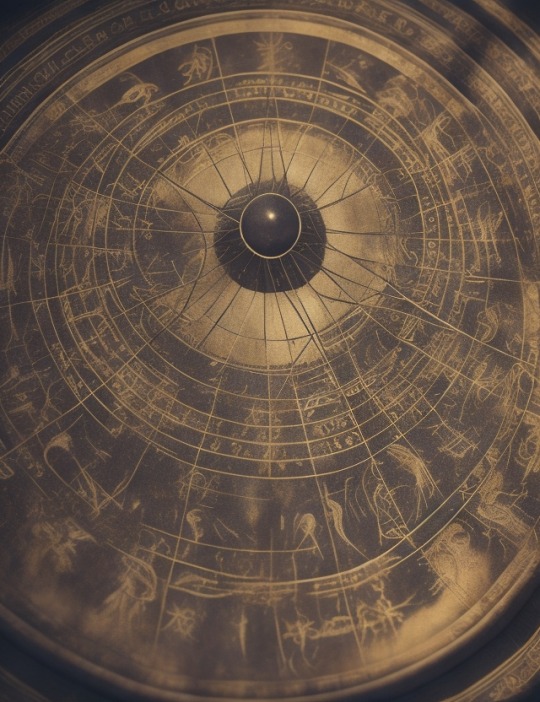
Diving into the Differences:
Nature:
Astronomy: Astronomy is a rigorous natural science grounded in empirical evidence and the scientific method.
Astrology: Astrology is often considered a pseudoscience due to its lack of empirical validation and scientific approach.
Goals:
Astronomy: Astronomers aim to comprehend the physical properties, behaviors, and phenomena of celestial bodies. Their pursuits contribute to our understanding of the universe's mechanics and evolution.
Astrology: Astrologers seek to predict human lives, behaviors, and events by interpreting the positions of celestial bodies. Their focus is on connections between the cosmos and human experiences.
Applications:
Astronomy: Astronomy has led to groundbreaking discoveries such as the Observable Universe Theory, the existence of black holes, and the properties of exoplanets.
Astrology: Astrology is often used for entertainment, personal reflection, and making predictions about individuals' lives based on birth charts and horoscopes.
The Cosmic Motions Continues:
While both fields share a fascination with the cosmos, they follow divergent paths. Astronomy unveils the universe's secrets through scientific exploration, while astrology delves into the interconnectedness of celestial and human realms. Remember, astronomy guides us toward the stars while astrology offers glimpses into our lives' celestial tapestry.
So, whether you're a stargazing enthusiast or someone who finds solace in the rhythms of astrology, let's celebrate the intriguing diversity of cosmic perspectives. Embrace the boundless wonders of the universe, and may your journey through the cosmic sea be filled with curiosity and wonder. 🌌✨
#AstronomyVsAstrology #CosmicPerspectives #CelestialWonders #ScientificExploration #AstrologicalConnections #UniverseUnveiled #StarryInquiries #AstrologyBeliefs #StargazersUnite #WondersOfTheCosmos #ExploringTheUnknown #CuriousMinds #CosmicClarity #CelestialMotions #BeyondTheStars #JourneyThroughTheCosmos #EmbraceTheWonders #CuriosityUnleashed #ScientificInquiry #ExploringMysteries #CosmicUnderstanding #CosmicTapestry #UnlockingTheUniverse #StellarExploration
0 notes
Text
The Precession of the Equinoxes and Astrological Ages: Exploring the Cosmic Cycle
Are you curious about the connection between star movement and our understanding of time? Dive deep into the concept of the precession of the equinoxes and its significance in astrological ages in this enlightening article! #PrecessionOfTheEquinoxes #AstrologicalAges #CosmicTime
Explore the Age of Aquarius, Zodiac ages, and how this celestial dance shapes our understanding of time. Discover the profound implications of the precession of the equinoxes on our perception of time and our place in the universe. #CosmicCycles #AstronomicalMechanism #Astrology
?? Unravel the mysteries of the precession of the equinoxes and astrological ages. Delve deep into the cosmic cycles and their influence on human consciousness and societal evolution. Expand your perspective and wonder about the vastness and complexity of the cosmos. #CollectiveConsciousness #CelestialDance #CosmicPerspective
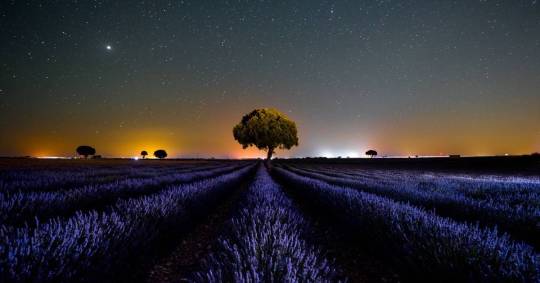
Link: https://astrologyvids.com/precession-of-the-equinoxes-astrological-ages/
0 notes
Video
🎉🎉🎉🎉 #acosmicjourney #demiandj #cosmicjourney #cosmicnews #cosmicpower #cosmicinsights #cosmicperspective #trixiemattel #trixieandkatya #katyazamolodchikova #spiritualmeme #spiritualmemes #gaymeme #gaymemes #bestmemesever #lightworker #lightworkers #lightworkersofinstagram #lightworker💫 #lightworkersunite #lightwarrior #lightworkersunited #lightworkerslounge #affirmationpositive #affirmationoftheday #affirmationquotes #affirmationsoftheday (at The Universe) https://www.instagram.com/p/CScehDQpk6X/?utm_medium=tumblr
#acosmicjourney#demiandj#cosmicjourney#cosmicnews#cosmicpower#cosmicinsights#cosmicperspective#trixiemattel#trixieandkatya#katyazamolodchikova#spiritualmeme#spiritualmemes#gaymeme#gaymemes#bestmemesever#lightworker#lightworkers#lightworkersofinstagram#lightworker💫#lightworkersunite#lightwarrior#lightworkersunited#lightworkerslounge#affirmationpositive#affirmationoftheday#affirmationquotes#affirmationsoftheday
3 notes
·
View notes
Text


Observation
24 x 20 in, Oil on Panel, 2014
Science is more than a body of knowledge, it’s a way of thinking.
Early philosophers used to believe we could understand the world simply by thinking about it, that what made sense to us must be true. But, Observation showed us that the universe often does not conform to our expectations or desires. It doesn’t matter how much we wish something to be true, how beautiful a theory is, or who came up with it. To find out what is true we have to look and pay attention to how the universe really works.
The methods of science have pulled humanity out of dangerous superstitions and entrenched ignorance. They have allowed us to find real solutions to stubborn problems from hunger and disease to communication. In the scientific method, Observation leads the way. We may not always like what we see, particularly if it runs against our cherished beliefs, but if we accept it with humility, we will find ourselves better able to confront the problems we face.
268 notes
·
View notes
Photo

#Repost @robreyart ・・・ Fusion Lighting the Stars Oil, 18 x 24 inches For 'Midnight Garden' show, curated by @beautifulbizarremagazine at @moderneden Gallery __ Stars are continuous nuclear explosions! Not simply fixed masses of hot gas, stars are a balance of two enormous forces: gravity and nuclear fusion. On its own, gravity would crush a star into the oblivion of a black hole or other super-dense entity. But nuclear fusion pushes back, releasing so much energy that the outer layers of the star are literally blown away, aloft from the core, and in equilibrium with gravity. From lightyears away, these cataclysmic explosions flutter as faint candles in our night sky. Stars live a looong time, billions of years, but eventually the fuel of fusion runs out and gravity prevails. In the span of the universe, stars exist as temporary states of matter that will one day transition into other things. Much of their mass will be crushed. But in the process, many will fuse carbon, the other elements of life, and form planetary nebula. Later, these nebula will condense into new solar systems, and perhaps be part of some other temporary state of matter lucky enough to be able think about it. __ #cosmicperspective #cosmos #astronomyart #spaceart #figurativeart #figurativepainting #figurativeartist #nebula #spaceartist #stars #scienceart #sciart #humanist #humanism #starstuff #stardust #secular https://www.instagram.com/p/CL8b7Zrn7oi/?igshid=1ie80azj101ic
#repost#cosmicperspective#cosmos#astronomyart#spaceart#figurativeart#figurativepainting#figurativeartist#nebula#spaceartist#stars#scienceart#sciart#humanist#humanism#starstuff#stardust#secular
6 notes
·
View notes
Photo

🎶🎵Por el bulevar de los sueños rotos Pasan de largo los terremotos Y hay un tequila por cada duda Cuando Agustín se sienta al piano Diego Rivera lápiz en mano, Dibuja a Frida Kahlo desnuda🎵🎶 📷📸🗣️👣💯✨ . . . . . . . . . . . #maddyphotography #maddyphotos #madelinematiasphotography #madelinematiasphotos #perspectiveiseverything #perspectiveart #perspective_in_focus #myperspective #paysagesetperspectives #unknownperspectives #changeyourperspective #cosmicperspective #higherperspective #forcedperspective #anotherperspective #perspectiveporn #perspectiveshift #perspectives #differentperspective #perspectiveshot #snowglobeperspective #perspectiveniteri #perspectivepixels #onepointperspective #intags #whpperspective #perspectivephotography (en Avenida 27 de Febrero) https://www.instagram.com/p/Ca3GlFyrw0L/?utm_medium=tumblr
#maddyphotography#maddyphotos#madelinematiasphotography#madelinematiasphotos#perspectiveiseverything#perspectiveart#perspective_in_focus#myperspective#paysagesetperspectives#unknownperspectives#changeyourperspective#cosmicperspective#higherperspective#forcedperspective#anotherperspective#perspectiveporn#perspectiveshift#perspectives#differentperspective#perspectiveshot#snowglobeperspective#perspectiveniteri#perspectivepixels#onepointperspective#intags#whpperspective#perspectivephotography
0 notes
Photo

Saturn was more than 3,000 times farther away than the Moon at the time this image was taken. ⠀ ⠀ Capture Date: May 14 2014.⠀ Follow @starrocketships ⠀ Via @theourspace⠀ ⠀ Image credit: Paul Stewart⠀ .⠀ .⠀ .⠀ .⠀ .⠀ #deepspace #astrofacts #astronomer #hubbletelescope #nebulas #carlsagan #cosmicperspective #neildegrassetyson #astro_photography #spaceexploration #spacefacts #spacelife #natgeospace #blackholes #astronomyphotography #astronomylover #apod #spacetime #beautifuluniverse #earthfromspace #astronomyy #astronomyfacts #astronomynerd #astronomyclass #astronomyclub #astronomyday #astronomylovers #astrophysicist https://www.instagram.com/p/CDlxbfhjZK2/?igshid=1l31usctntvc2
#deepspace#astrofacts#astronomer#hubbletelescope#nebulas#carlsagan#cosmicperspective#neildegrassetyson#astro_photography#spaceexploration#spacefacts#spacelife#natgeospace#blackholes#astronomyphotography#astronomylover#apod#spacetime#beautifuluniverse#earthfromspace#astronomyy#astronomyfacts#astronomynerd#astronomyclass#astronomyclub#astronomyday#astronomylovers#astrophysicist
0 notes
Photo
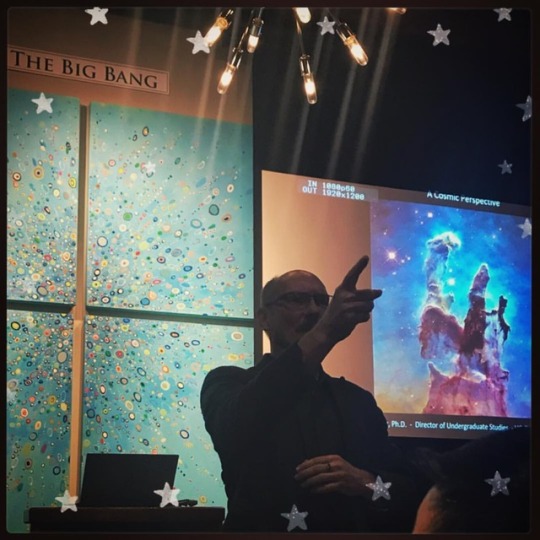
I truly enjoyed listening to Dr. Scott Fisher speak tonight about “A Cosmic Perspective.” Astronomy saves my heart from the darkest of hours once again. 🌌 #astronomy #lecture #worthybrewing #scottfisher #astrophysics #cosmicperspective #bendoregon #universityoforegon #physics #astroanarchy #universe #starstuff (at Worthy Brewing)
#cosmicperspective#astroanarchy#astronomy#universe#astrophysics#starstuff#physics#lecture#worthybrewing#scottfisher#universityoforegon#bendoregon
4 notes
·
View notes
Text

Astro Mahindra, the best and famous Indian astrologer in Florida, adeptly addresses hurdles in life, including marriage problems, black magic issues, financial challenges, and health concerns. #cosmicperspective, #astrologyclues, #zodiacmysteries, #astrologyenergy, #celestialinsights
0 notes